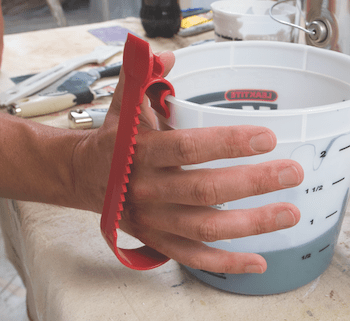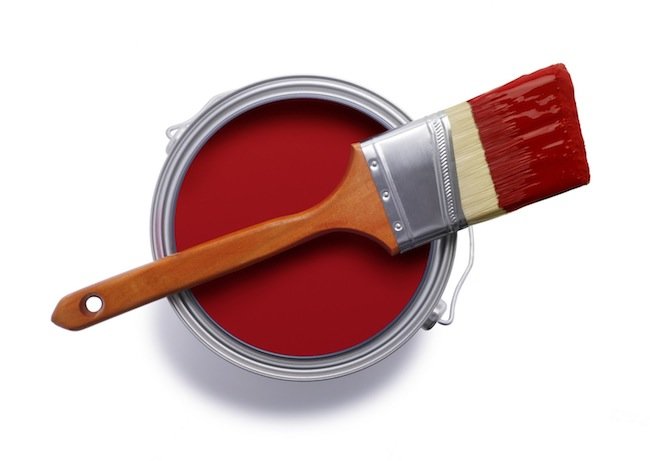We may earn revenue from the products available on this page and participate in affiliate programs. Learn More ›
Painting seems like a pretty straightforward task, so homeowners frequently choose to do it themselves in order to save a little money. But the entire process can turn into a big, frustrating mess if you don’t know a few simple techniques. Because that old saying “you can work hard or you can work smart” is particularly true for painting, we’re going to share a few professional tips and techniques from HYDE Tools on the right way to handle a paintbrush.
Start small—You may think that a bigger brush will save you time and you may be right in theory, but you’ll have much more control with a smaller brush. Start with a 1½-inch angled brush until you master the techniques, then work your way up if you like.
Go for quality—When shopping for brushes, you’ll notice a wide range of prices. It’s tempting to buy a cheap brush because you can’t really tell the difference in the store, but trust us on this—you get what you pay for. Buy the most expensive brush you can afford; you won’t regret it. And before you start painting with your new brush, be sure to prepare it properly.
Choke up on the brush—In baseball, to “choke up” on the bat simply means to move your hands closer to where the bat contacts the ball, which increases accuracy. The same idea applies with your brush: You will have more control if you move your hand as close to the bristles as possible without actually touching them. With your hand closer to the action, you’ll achieve a more accurate stroke.
Flatten out the brush—When cutting in to make a clean, straight line, gently push the brush down onto the surface a short distance away from where you want the edge, then work your way over to the line. The pressure will help your hand remain steady and distribute the paint more evenly. Make sure you have enough paint on the brush to enable you to push a very small bead of paint down the line.

Don’t use a full can of paint—When you’re painting a room, pour three-quarters of the can into your roller tray. Use that small amount of paint still in the can to cut in the walls to the ceiling. This will keep you from dipping the brush too far into the paint and making a mess on your hands and the stock of the brush. For small jobs, there’s no need to paint out of a full can, so consider the HYDE Painter’s Assistant, which serves as a convenient carrying handle for one- and two-quart containers and also functions as a magnetized paintbrush holder and paint-can opener; putty knife, brush and roller cleaner; and belt hook.
Don’t wipe the paint off—Most people instinctively wipe the brush on the side of the can after it’s been dipped in the paint. Resist the temptation! While you don’t want your brush dripping with paint, you also don’t want to wipe most of it off. Instead of wiping the brush, lightly slap it a few times on the inside of the can like you’re ringing a bell. See the HYDE video below on how to properly load a brush.

Breathe through the stroke—This may seem hokey at first, but a steady hand requires oxygen—it’s a physiological fact. Many people have a tendency to hold their breath when they are concentrating, but this can work against you. Ask anyone who is good at pool, darts, archery, or anything else that requires a steady hand and they’ll tell you that breathing is crucial.
Don’t gunk it up—If you want your brush to perform optimally, you have to keep it free of excess paint. The best way to avoid gunk-up is to use only the first inch or two of the brush.
If you apply these tips and techniques consistently, your painting skills will improve and your overall experience will be much more rewarding, as will the results. For more instructional paint tutorials, click here. I guess you could say that following these tips will give you an “edge” the next time you grab a paintbrush!
This post has been brought to you by Hyde Tools. Its facts and opinions are those of BobVila.com.
